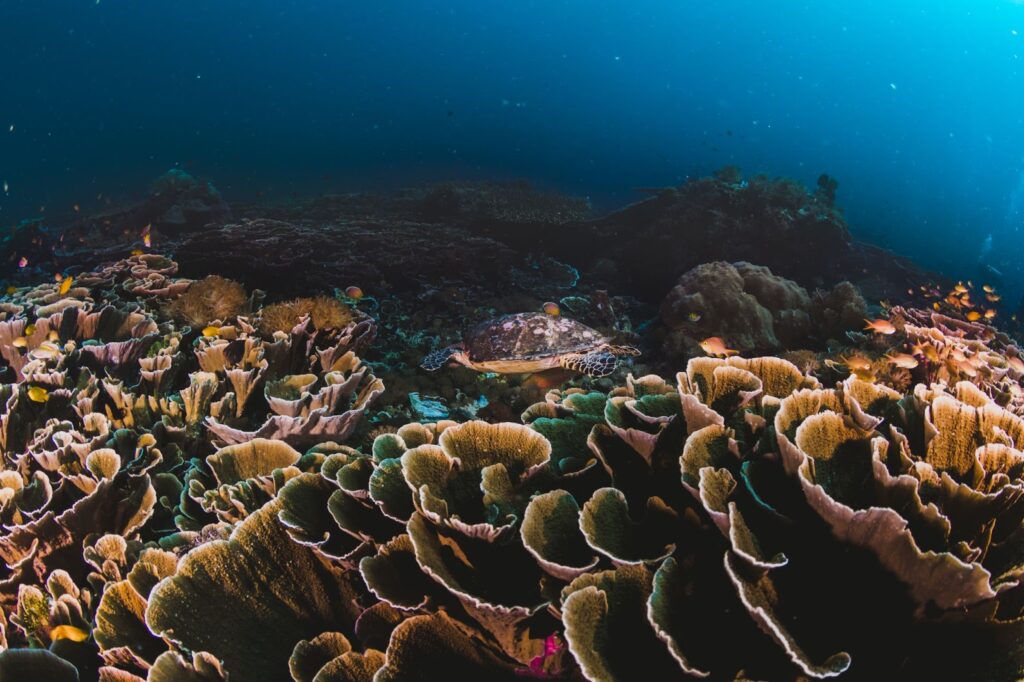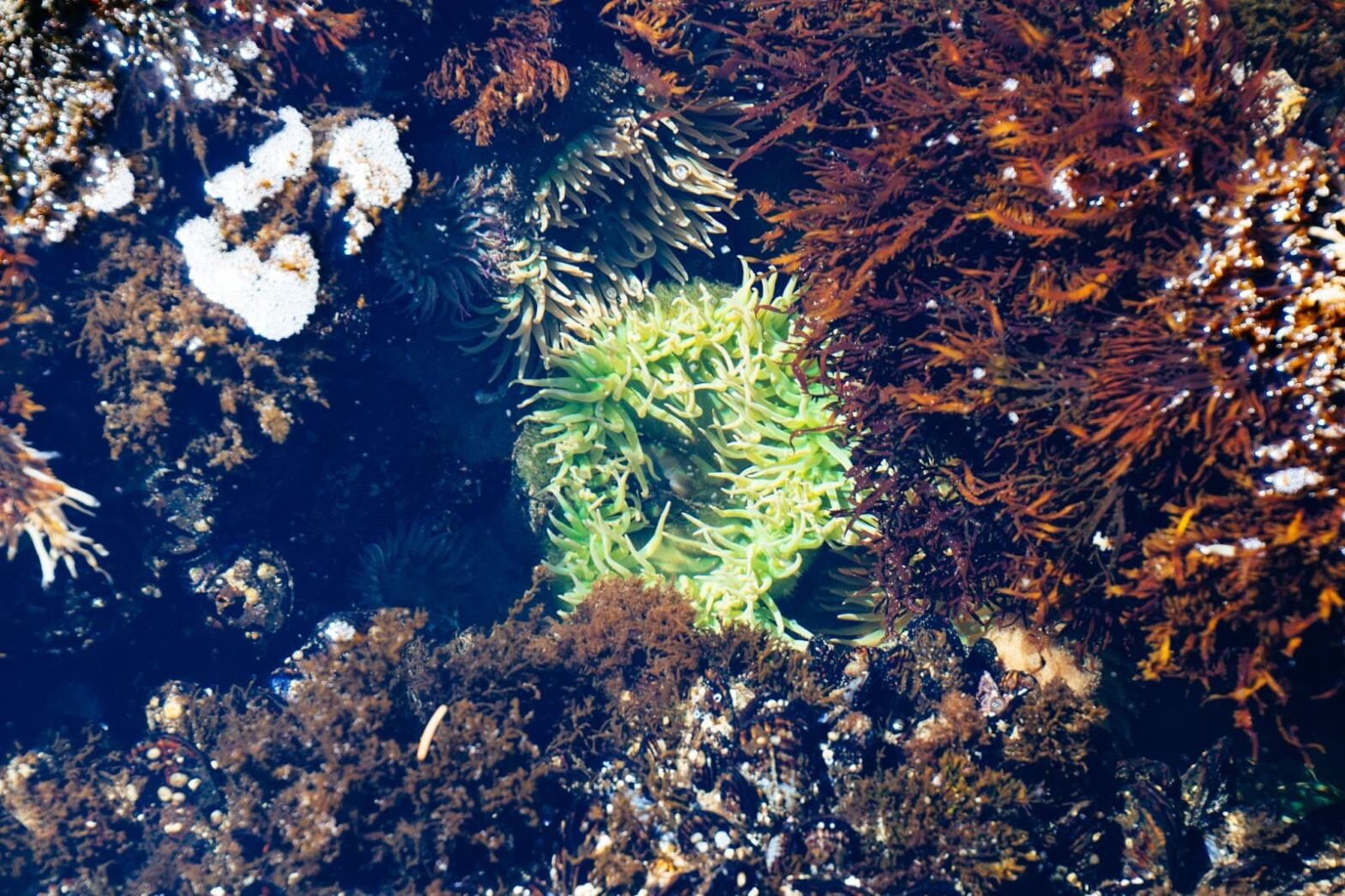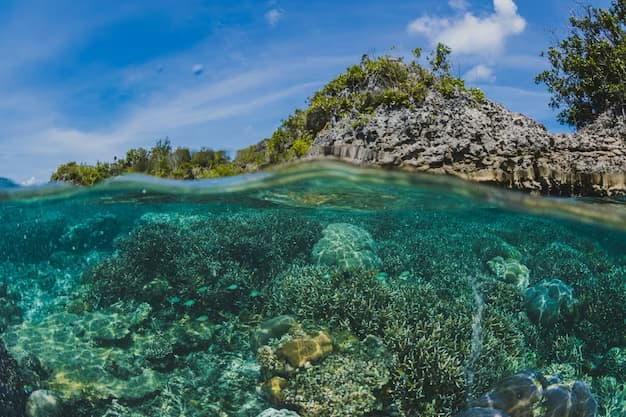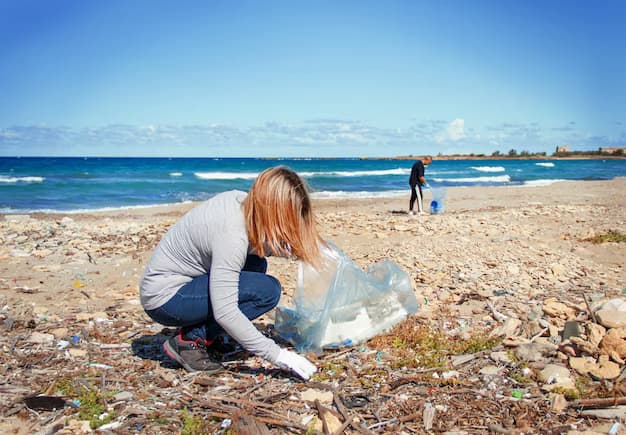Coral reefs, which harbor a staggering 25% of the ocean’s biodiversity while occupying merely 1% of the ocean floor, face imminent threats due to the adverse impacts of climate change and unsustainable human activities.
Fortunately, innovative solutions like coral farming have emerged to counteract the rapid decline of these crucial ecosystems.
Coral farming entails the establishment of underwater nurseries where coral fragments are carefully nurtured on artificial structures before being transplanted onto degraded reefs, with the overarching goal of rejuvenating these compromised areas.
Given the perilous combination of unsustainable fishing methods, coral bleaching triggered by global warming, irresponsible tourism practices, and a deficiency in public awareness, the survival of these marine creatures hinges upon concerted conservation efforts.
Now, let us delve into how the adoption of sustainable coral farming techniques is effecting positive change in the preservation of coral reefs.
Exploring the Concept of Coral Reef Farming
Coral reef farming is an innovative response to the alarming rate of coral reef depreciation globally. This initiative is focused on breeding, raising, and nurturing coral colonies in supervised settings.
The main objective is to mitigate the adverse effects of environmental hazards, climate change, and human activities that have led to the rapid destruction of coral reefs. By artificially reproducing these crucial marine species, we strive to enhance their population, and subsequently, the overall health of our oceans.
Coral reef farming mainly takes place in shielded areas such as lagoons or within the coral reefs themselves. However, there are alternative practices such as on-land coral farming in specially-designed tanks. This is an effective method to control various growth factors and closely monitor the corals’ health, therefore enhancing their survival and propagation rates.
This method is known by several other names like coral aquaculture or coral gardening. Acting as underwater nurseries, these coral farms are home to different species of corals. Not only do these farms contribute significantly to replenishing deteriorating reefs, but they also offer a sustainable substitute to coral collectors and aquarists. Instead of sourcing corals from their natural habitat, thereby disturbing the delicate marine ecosystem, enthusiasts can now acquire these beautiful marine organisms from sustainable coral farms.
Key Aspects of Coral Reef Farming:
- Preservation of Marine Ecosystem: The prime motive of coral farming is to combat the rapid reef degradation by artificially enhancing coral populations;
- Controlled Environment: Coral farming, especially in land-based tanks, offers a controlled environment to monitor the coral’s growth conditions precisely, thus maximizing their survival rate;
- Variety of Species: Underwater coral farms serve as a rich nursery, accommodating multiple coral species within their domain;
- Sustainable Source: Providing a sustainable source of corals for aquarists or coral collectors, these farms actively discourage disturbance of the fragile natural coral habitats.
An In-depth Look at Coral Farming
Coral farming consists of nurturing and growing colonies of coral in specifically designed environments. This step forward in marine conservation helps tackle the ever-increasing reduction of coral populations in our oceans.
Certain practices involve in-situ farming within protected zones like lagoons or natural reefs. However, an alternative ex-situ method includes moving a section of coral to land-based tanks for propagation. This controlled environment allows precise monitoring of growth conditions, enhancing survival rates.
Referred to interchangeably as coral aquaculture or coral gardening, these marine nurseries accommodate a host of coral species. Their primary purpose is to replenish dwindling reefs, but they also provide a sustainable substitute for aquarists and coral hobbyists. Coral farming lessens the strain on natural environments, discouraging the removal of corals from their natural habitats.
Delving into the Methods of Coral Farming
While the concept of coral farming might share similarities with traditional gardening, it incorporates its unique strategies and techniques.
Constructing the Coral Nursery
The initial step involves establishing a secure structure or nursery that would support coral growth. The chosen location should be shielded from extreme water currents, fluctuating temperatures, changes in salinity levels, and human interference like tourism.
The nursery should provide ample space for corals to attach and nurture colonies as they mature. Materials used for constructing the support structure can vary dramatically. Options include:
- PVC structures: Lightweight, durable, and easy to install, PVC-based frameworks are popular choices;
- Glass bottles: They offer an eco-friendly way to recycle and can serve as excellent attachment points for corals;
- Cages: They offer protection from potential coral predators and can be easily observed and maintained;
- Concrete structures: Heavy and stable, they withstand strong currents and can support larger coral colonies;
- Specialized tanks: Ideal for land-based coral farming, these tanks offer a controlled environment for optimal coral growth.
By understanding the intricacies of coral farming, we can contribute to the preservation of our oceans’ vitality and biodiversity.
Gathering Coral Larvae and Fragments for Coral Farming
In coral farming, core material is harvested from existing reefs in the form of coral fragments or larvae that are floating freely. These components are then relocated to the newly formed coral nursery.
Using fragments is often the preferred method as their survival and growth rates tend to be higher. It’s crucial to ensure these fragments have naturally broken away from the parent colony, thereby minimizing further damage to the original reef.
Corals are incredibly sensitive organisms, with specific growth and survival requirements varying from species to species. Consequently, it’s vital to create a nursery environment that closely matches the habitat from which the fragments were collected.
After collection, the fragments are carefully fastened to the farming structure. This can be achieved using a range of materials such as:
- Cable ties;
- Bands made of rubber;
- Wire;
- Plastic tubes;
- Eco-friendly adhesives.
The chosen method should not only securely attach the coral but also mitigate potential harm to the environment and the fragments themselves.
Successful coral farming requires a thorough understanding of the complex needs of corals and their habitats. However, the rewards of contributing to the restoration of our valuable marine ecosystems make the effort worthwhile.
The Journey from Nurturing to Transplanting Corals
Caring for newly propagated corals is a task that requires meticulous observation and management. During the initial growth stages, factors such as water temperatures, salinity, pH and nutrient levels, as well as water flow and light conditions, should be precisely monitored. This careful nurturing ensures that the corals have optimal conditions to flourish.
As the coral colonies mature and expand, they might require less intensive care. However, given the sensitivity of corals to their surrounding environment, constant monitoring remains integral.
Transplanting and Marketing Corals
When the coral colonies on these farms have grown to a size suitable for transplantation, and their overall health indicates readiness, they are carefully removed. These mature corals are either transplanted to another location to aid in reef restoration or sold to aquariums and marine hobbyists for aesthetical, recreational, or educational purposes.
Corals earmarked for reef restoration are moved to suitable locations, often sourced from the same area as the original fragments. They are then replanted and monitored periodically to ensure successful acclimatization and survival within their new community.
This practice of coral farming and transplantation has a two-fold benefit. It aids in the reviving of degrading reefs, and simultaneously lessens the demand for illegal or unsustainable coral harvesting. The result is a sustainable method to maintain the beauty and functionality of our oceans.
The Significance of Sustainable Coral Farming
The emphasis on sustainable practices in coral farming serves a dual purpose—it acts as a shield in conservation efforts, and simultaneously proves its value economically.
Outlined below are key areas that coral farming addresses:
Conservation Implications of Coral Farming
- Facilitating Reef Restoration: Coral farms are the backbone of reef restoration projects. They provide a renewable reservoir of corals ready for transplantation and reestablishment, thereby postponing the irreversible decay of existing reefs;
- Minimizing Harvesting from Natural Reefs: Coral farming acts as an alternate source of corals— eliminating the need for depleting slowly proliferating natural reefs. This respite allows existing reefs to revitalize and prosper;
- Enhancing Coral Resilience and Genetic Diversity: Coral farming serves as a platform for nurturing robust coral species that demonstrate higher resilience to threats. By conserving endangered species and augmenting the gene pool, these farms ensure the survival of corals even under adverse conditions;
- Serving as a Hub for Research and Education: Coral farms, with their controlled environments, are prime locations for conducting research on coral growth patterns, behavior, and general life cycle. These insights are crucial for educating the public about coral conservation and furthering scientific understanding of these delicate marine organisms.
In conclusion, sustainable coral farming is a promising strategy that combines conservation and economic benefit. By maintaining a balance, it ensures that our oceans continue to teem with life, enriching our planet’s biodiversity.
The Economic Impact of Coral Farming
The practice of coral farming brings along undeniable economic benefits by paving the way for sustainable business opportunities, promoting tourism, and revitalizing coastal communities.

Catalyzing Sustainable Trade
Coral farming offers an ethical and sustainable source for the coral trade, thereby mitigating the destructive harvesting of corals from natural reefs. Industries such as aquarium supplies greatly benefit from these sustainable coral farms and the sale of these responsibly-grown corals can generate significant revenue. This monetary gain can fuel small conservation initiatives and support community development.
Boosting Tourism
Coral farms and artificial reefs have shown to be a significant magnet for tourists, especially those intrigued by the underwater world, like SCUBA divers and snorkelers. The innovation of coral farming can breathe new life into otherwise overlooked coastal areas, attracting visitors, and infusing revenue into local economies.
Empowering Coastal Communities
Coral reefs are associated with a rich diversity of marine life, including numerous fish and plant species. By aiding in the establishment and growth of these ecosystems, coral farms indirectly support the livelihoods of many coastal communities.
Beneficial impacts of coral farming on coastal livelihoods include:
- Sustaining and enhancing fish populations: By creating habitats, coral farms help stabilize and even increase local fish populations, crucial for communities where fishing is a primary source of income and food;
- Introducing new species: Coral farms can lead to the introduction of new marine species along the coastlines, further enriching the local marine diversity;
- Strengthening coastal protection: Coral reefs act as natural sea barriers, protecting coastal communities from storms and erosion. Their regeneration through coral farming contributes to the overall safety and preservation of these communities.
In conclusion, coral farming is not just an ecological initiative but also a socio-economic one, balancing environmental responsibility with economic prosperity.
Conclusion
In conclusion, the utilization of sustainable coral farming practices represents a beacon of hope in the face of dwindling coral populations. By fostering the growth and restoration of degraded reefs, coral farming offers a tangible solution to mitigate the detrimental effects of climate change and unsustainable human activities on marine ecosystems. However, it is imperative that we continue to prioritize conservation efforts, raise awareness, and implement policies to safeguard these invaluable habitats for future generations. Through collective action and dedication, we can strive towards a more resilient and vibrant future for our oceans and the diverse life they support.



